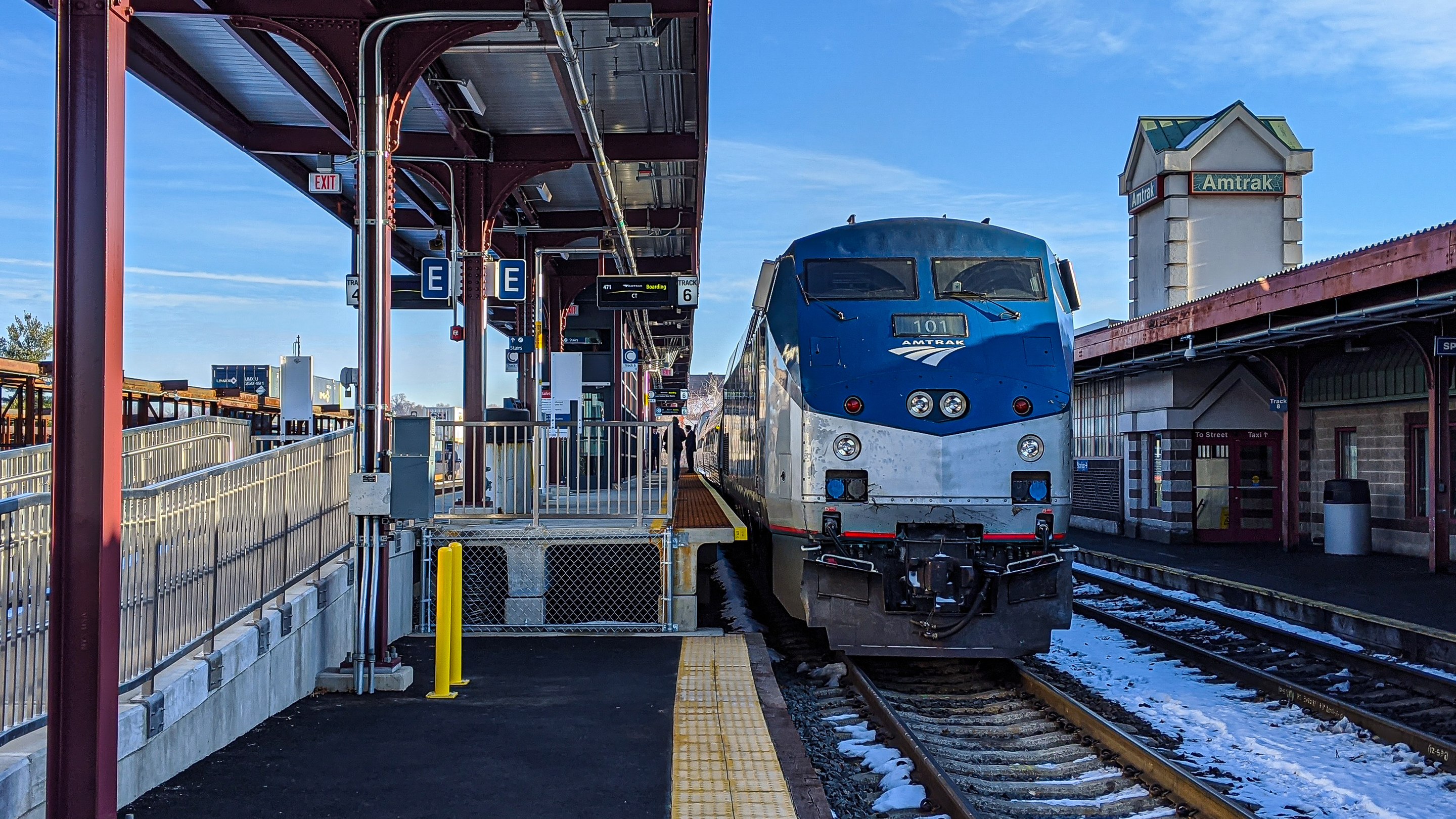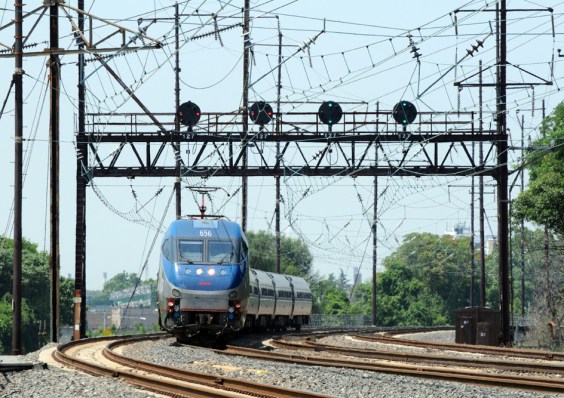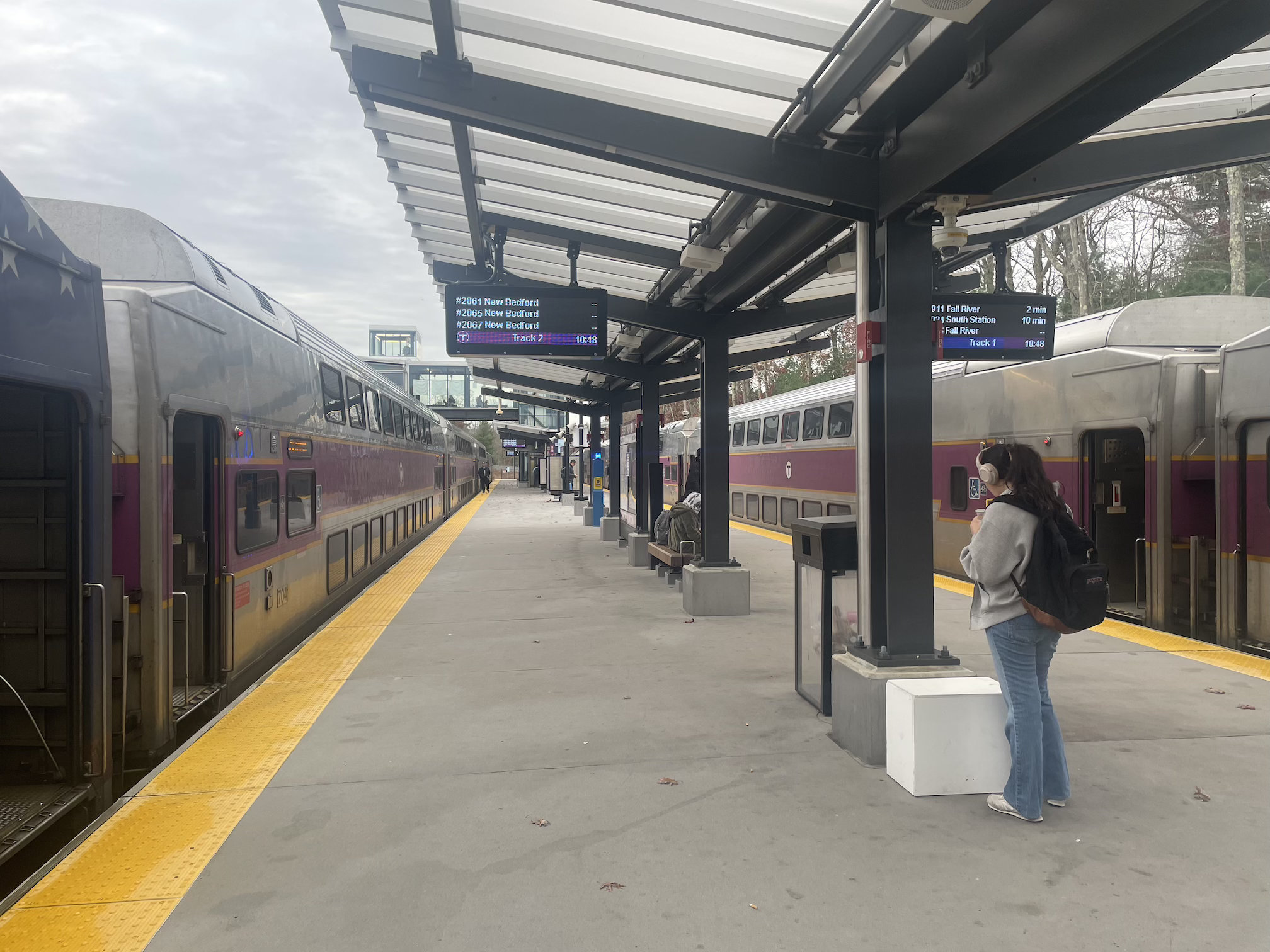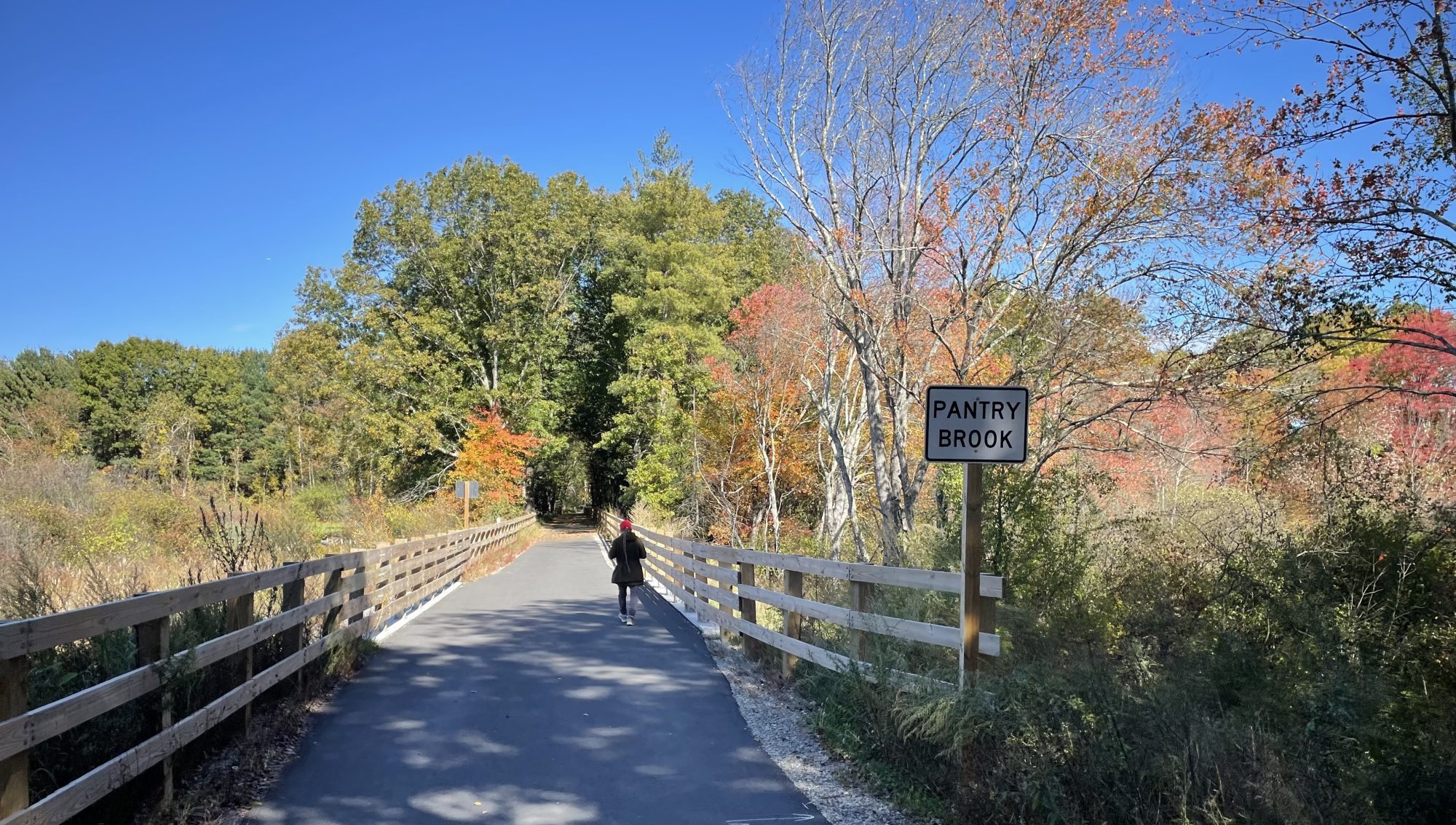MassDOT has applied for a $108 million federal grant to upgrade the freight railway between Worcester and Springfield to allow higher speeds and two more daily round trips for Amtrak's passenger trains.
According to a MassDOT grant application, the proposed project would upgrade key bottlenecks on the 54-mile section of railroad that connects Worcester and Springfield.
Currently, roughly approximately 10 freight trains and two daily Lake Shore Limited Amtrak trains (one in each direction) share a single track on 44 of the 54 miles of railroad between Worcester and Springfield.
MassDOT's proposed project would add a second passing track on about 23 miles' worth of the route, which would allow more trains to use the corridor.
The project would also upgrade tracks and signals so that more of the corridor meets federal standards for a "Class 4" railroad, which would allow passenger trains to run at speeds up to 80 mph.
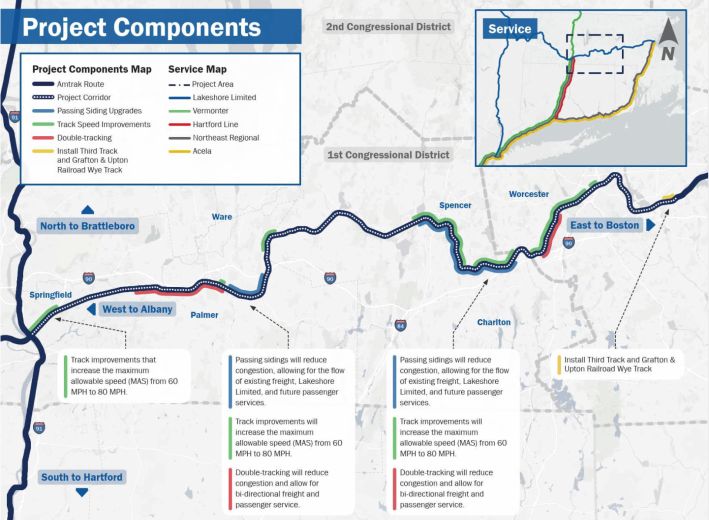
MassDOT estimates that the track improvements could shave about 20 minutes off Amtrak's travel times on the corridor, and reduce the time for passenger rail trips between Boston and Springfield to 2 hours and 10 minutes – roughly the same amount of time it takes to drive.
"The improvements along this segment are foundational for the additional
growth in passenger and freight rail within the New England Region over the longer term, by facilitating advancement of passenger service expansion on both the Inland Route (which runs from New Haven, Springfield, Worcester, and Boston) and the Boston to Albany Route," according to MassDOT's grant application.
MassDOT recently studied rail upgrades on this corridor in its East-West Passenger Rail Study, which envisioned a new passenger rail service between Pittsfield, Springfield, Worcester, and Boston.
But MassDOT's CRISI grant application appears to prioritize implementation of recommendations from an earlier 2016 study, the Northern New England Intercity Rail Initiative (NNEIRI).
That study focused on connecting Worcester and Boston to the cities of the Connecticut River Valley via a new Amtrak "Inland Route" to New Haven and New York City:
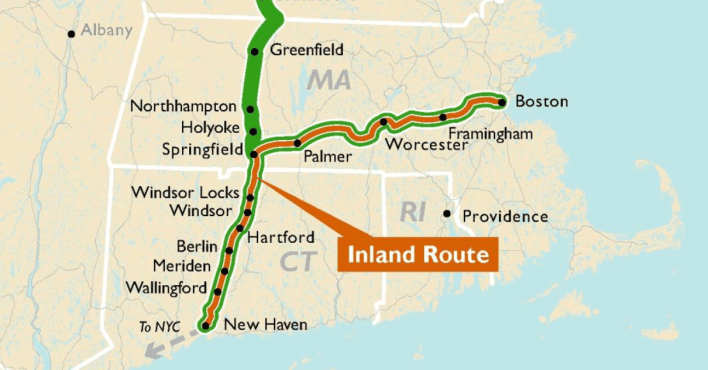
MassDOT's grant application suggests that this project's two additional round-trips on the corridor would run along this new Inland Route to New Haven, rather than adding new service on the existing Lake Shore Limited route to Albany and Chicago.
Connecticut upgraded its segment of the Inland Route in 2018, when the Hartford Line project built new tracks and signals along the length of the Connecticut River valley to support 16 round-trips a day at train speeds up to 110 mph. Five of those trips extend all the way to Springfield, and the remainder run within Connecticut's borders.
The Commonwealth is competing for the funding through the U.S. Department of Transportation's expanded Consolidated Rail Infrastructure and Safety Improvement (CRISI) program, which funds railroad infrastructure improvements.
Under the Bipartisan Infrastructure Law, the CRISI program is expected to give away $1.4 billion this year – more than three times more than the program's previous budget.
